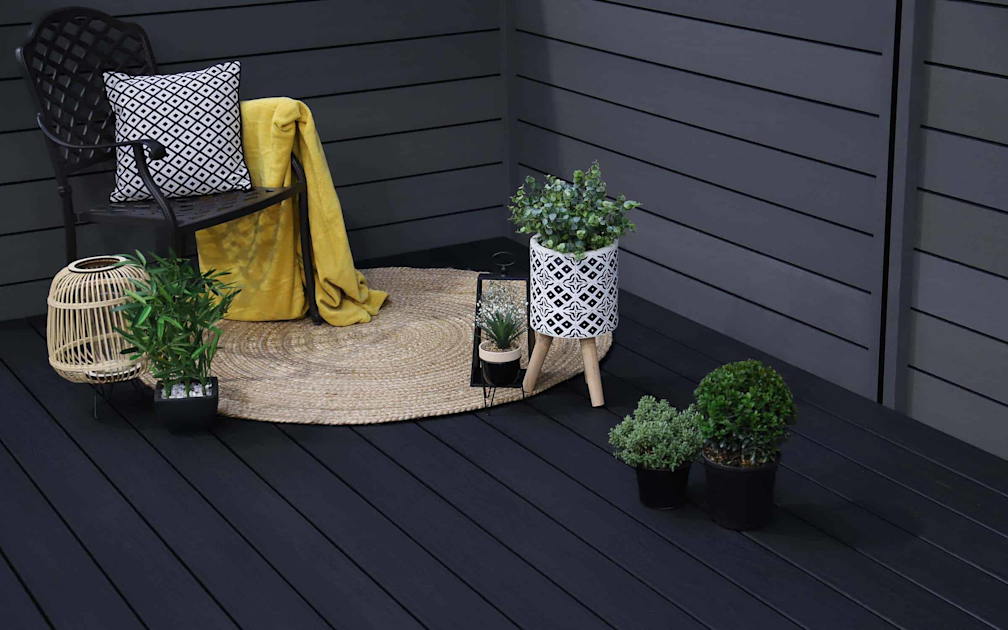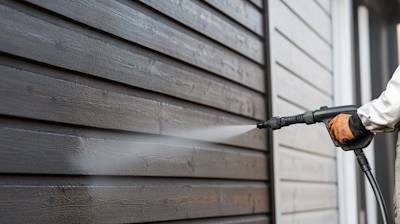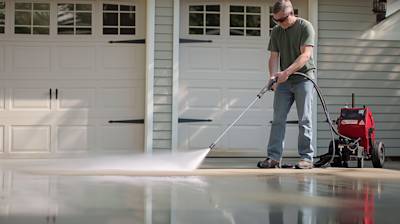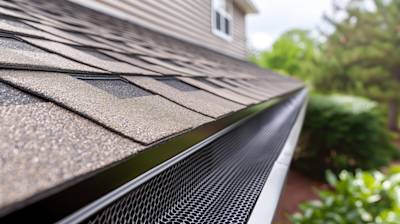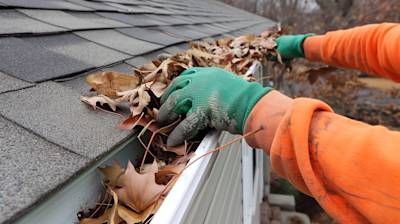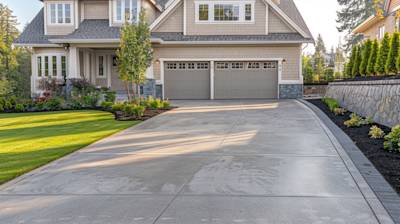Restoring your wooden pieces by applying a fresh coat of paint offers a fantastic way to breathe new life into your old furniture. However, what if the wood has been previously stained? A frequent question that often arises is "can you paint over stained wood?" The straightforward and succinct answer is "yes"; painting over stained wood is completely feasible and can achieve desirable results with the right preparation and application methods.
Understanding What Stained Wood Is
Before delving into the step-by-step guide, it is essential to understand what stained wood is. When wood is stained, it means a type of paint that is very thin in consistency and has been applied to it. This paint-soaking into the grain of the wood enhances its natural tones and textures, giving it an appealing, enriched, and vivid color. When thinking about whether you can paint over stained wood, knowing the condition of your wood is critical.
Preparing Stained Wood for Painting: The Crucial First Step
The ability to efficiently paint over stained wood mainly depends on how well you’ve prepared the surface. Here, preparation is the vital step that many often overlook.
Cleaning the Surface
Before applying paint, the wooden surface's cleanliness needs to be ensured. Use a mixture of mild detergent and warm water to scrub away any accumulated dirt and grime. Once the wood is dry, you're ready for the next step.
Sanding the Surface
To achieve the best results, lightly sand the stained wood to "rough up" the surface. This step will help the subsequent paint layers adhere to the surface better. Here's what that involves:
- Start with a medium-grit sandpaper (around 150-grit) to roughly loosen the stain's top layer.
- Proceed with a finer-grit sandpaper (around 220-grit) for a smoother, more finish-friendly surface.
- Wipe any residual dust with a dry or damp cloth.
Applying Primer
Applying a layer of primer is critical when painting over stained wood, especially if the staining is dark. The primer works as a sealant, preventing the stain from showing through the paint and providing an optimal surface for the paint to adhere better. It can also help in achieving a more even, consistent color.
Selecting the Right Paint for Stained Wood
Choosing the right type of paint can significantly affect the final appearance of your painted-over-stained-wood project. Oil-based paints are usually durable and tack well on surfaces. They also cover stains from the underlying wood effectively. On the other hand, water-based paints dry faster and are eco-friendlier.
Painting Over Stained Wood: The Finishing Touches
With adequate preparation and the right paint, you now have the green light to proceed with painting. Here are some valuable painting tips to consider:
- Always try to apply thin, even coats of paint. Two to three coats are often adequate for a satisfying, rich color.
- Always let each coating fully dry before applying the next.
- Once painted, protect your work with a clear sealant or topcoat. This measure will ensure that your work lasts and remains charming.
When to Seek Professional Assistance
While it's entirely feasible to paint over stained wood by yourself, several situations may require a professional touch. For instance, if the piece you're working on is antique, of high sentimental value, or simply too large or intricate, hiring a professional might be the wiser choice. Professionals have the expertise and tools to ensure the perfect outcome without compromising the piece’s quality or durability.
So, to restate our initial conundrum, "can you paint over stained wood?" Yes, you can! With the correct preparation, appropriate paint selection, and proper application, you can transform your stained wooden pieces into vibrant, refreshed versions of their previous selves. Unlike what many may believe, the process is not complex or daunting at all, paving the way for do-it-yourself enthusiasts to give their wooden furnishings a personal, unique touch.
Frequently Asked Questions About Painting Over Stained Wood
Can I apply paint directly to stained wood?
While it is possible to paint directly over stained wood, it is advised that you first prepare the surface in order to achieve the best and most long-lasting results. This typically involves cleaning the surface, sanding the wood, and applying a good quality primer to create an ideal painting surface.
What will happen if I paint over stained wood without priming?
If you choose to paint over stained wood without priming it first, you might face some problems. The paint may not adhere properly to the wood, the stain might show through the paint, or the paint may peel off with time. A quality primer is key in preparing the surface and ensuring that your paint job lasts.
What kind of primer is best to use before painting over stained wood?
When getting ready to paint over stained wood, it’s recommended to use an oil-based or shellac primer. These types of primer offer excellent adhesion to stained surfaces, and they also keep the stain from showing through the paint.
Do I need to sand the stained wood before painting?
Yes, it’s usually a good idea to sand the stained wood before you paint it. Sanding helps provide a rough surface for the primer and paint to adhere to, which can improve the durability of your paint job.
How to clean the stained wood before painting over it?
Before you begin the painting process, clean any dust, dirt, or grease from the surface of the stained wood. You can use a mild household detergent mixed with warm water and a soft cloth or sponge. Once the surface is clean, rinse with plain water and allow it to dry completely.
Can you paint over stained wood without sanding?
While it's recommended to sand before painting for optimal results, if sanding is not possible, you can use a deglossing product or a primer that is specifically designed to bond without sanding.
Can I use a latex paint to paint over a stained wood?
Yes, you can use latex paint to paint over stained wood. However, a primer needs to be applied prior to ensure good adhesion of the paint. Also, it is important to note that latex paint may not be as durable as oil-based paint.
How long should I wait between applying the primer and applying the paint?
Although drying times can vary based on the specific product and environmental conditions, it’s usually a good idea to let the primer dry for at least 24 hours before painting. This gives the primer time to fully dry and bond to the stained wood, which can enhance the durability of your paint job.
Can glossed stained wood be painted over?
Yes, you can paint over glossed stained wood, but it will require extra preparation. Before applying paint, it is recommended to sand the surface to remove the gloss finish and use a primer before applying your paint.
Pros and Cons of Painting Over Stained Wood
Pros of Painting Over Stained Wood
Fresh Look and Feel
One of the main advantages of painting over stained wood is the ability to give your old wooden items a fresh, new look. Painting allows you to change the color and feel of the wood, enhancing its aesthetic appeal. It enables you to match the wood with your existing décor or to give it a contrasting color for a more vibrant look.
Protection for your wood
- Painting over stained wood can create a layer of protection against different elements which could otherwise damage the wood. High-quality paint prevents absorption of moisture, hence reducing instances of rotting.
- It also protects your wood from extreme temperatures and UV radiation, reducing the weathering process and thus improving the lifespan of your wood.
Increased Value
Painted wood tends to look newer and more sophisticated, which can in turn increase its value. Whether it's a piece of furniture or a part of your home, painting over stained wood can be an investment that benefits you in the long run.
Variety
- With painting, you have an unlimited choice of colors to use on your stained wood. This wide range of color options allows you more flexibility in your design process.
- It also allows for more creativity and personalization, as you can combine different colors to achieve your desired effect.
Cons of Painting Over Stained Wood
Loses Natural Appeal
One of the major disadvantages of painting over stained wood is the loss of natural charm and grain of the wood. The paint covers the wood's distinctive patterns and texture, which are appealing to many homeowners. This loss may diminish the wood's rustic and organic appeal.
Requires More Maintenance
- Painted surfaces tend to require more maintenance than stained wood. They are more prone to peeling, chipping, and cracking, requiring touch-ups and repainting over time.
- Moreover, painted wood surfaces show scratches and dents more obviously than stained wood, leading to frequent need for repairs and maintenance.
Difficult to Revert
Once you paint over stained wood, reverting back to the original stained look can be quite a challenge. The process of stripping off paint is both labor-intensive and time-consuming. Moreover, it might not guarantee the restoration of the original stained look, especially if the paint has penetrated deep into the wood grains.
Preparation Can Be Time-Consuming
Before painting over stained wood, a good deal of preparation is required to ensure a quality finish. This generally includes cleaning the surface, sanding it down and applying primer. Depending on the size and complexity of the item, this process can be quite time-consuming.
Understanding the Pros & Cons of Painting Over Stained Wood: Is it Worth It?
In wrapping up, it’s clear that painting over stained wood has its benefits and drawbacks. The decision to paint largely depends on the desired look, the state of the wood, and the amount of effort you’re willing to put into the preparation and maintenance. While the allure of color and an extra layer of protection might be enticing, it’s also important to bear in mind the beautiful natural features of stained wood that might be lost in the painting process. Additionally, the necessary maintenance and difficulty of reverting back to the stained look are noteworthy points to consider.
Summary
So yes, you definitely can paint over stained wood. However, you have to bear in mind the steps such as cleaning, sanding, priming and finally painting. These steps are crucial in getting a neat and durable finish. Patience plays a big role in this task but at the end of the day, you will be super proud of your transformed piece.
Understandably, there may be some hesitation given the moisture content in the stain can interfere with the paint, but rest assured that's where priming comes in handy. So again, can you paint over stained wood? Absolutely! It's all about the process and taking it one step at a time.
So, there we have it, you can paint over stained wood. You don't have to get rid of that old wooden chair or table, nor do you need to strip off the old stain completely. With a little bit of know-how, some elbow grease and the right tools, you can get that fresh, new look you've been longing for. Painting over stained wood is not challenging as long as you follow the right steps. Get those brushes ready!
About Grime Busters Pressure Washing
Welcome to Grime Busters Pressure Washing! Based in Vancouver, WA, we are your reliable partners in maintaining homes and commercial properties. Our expert team combines experience with the latest pressure washing techniques to deliver superior cleaning results. We're equipped to tackle even the toughest grime and dirt, offering spotless, gleaming surfaces. So, whether you need a one-time deep clean or regular maintenance, Grime Busters Pressure Washing is here to ensure your property always looks its best. After all, we're not just about cleaning, we're about caring!
Tags: painting over stained wood, wood painting, DIY painting tips,

